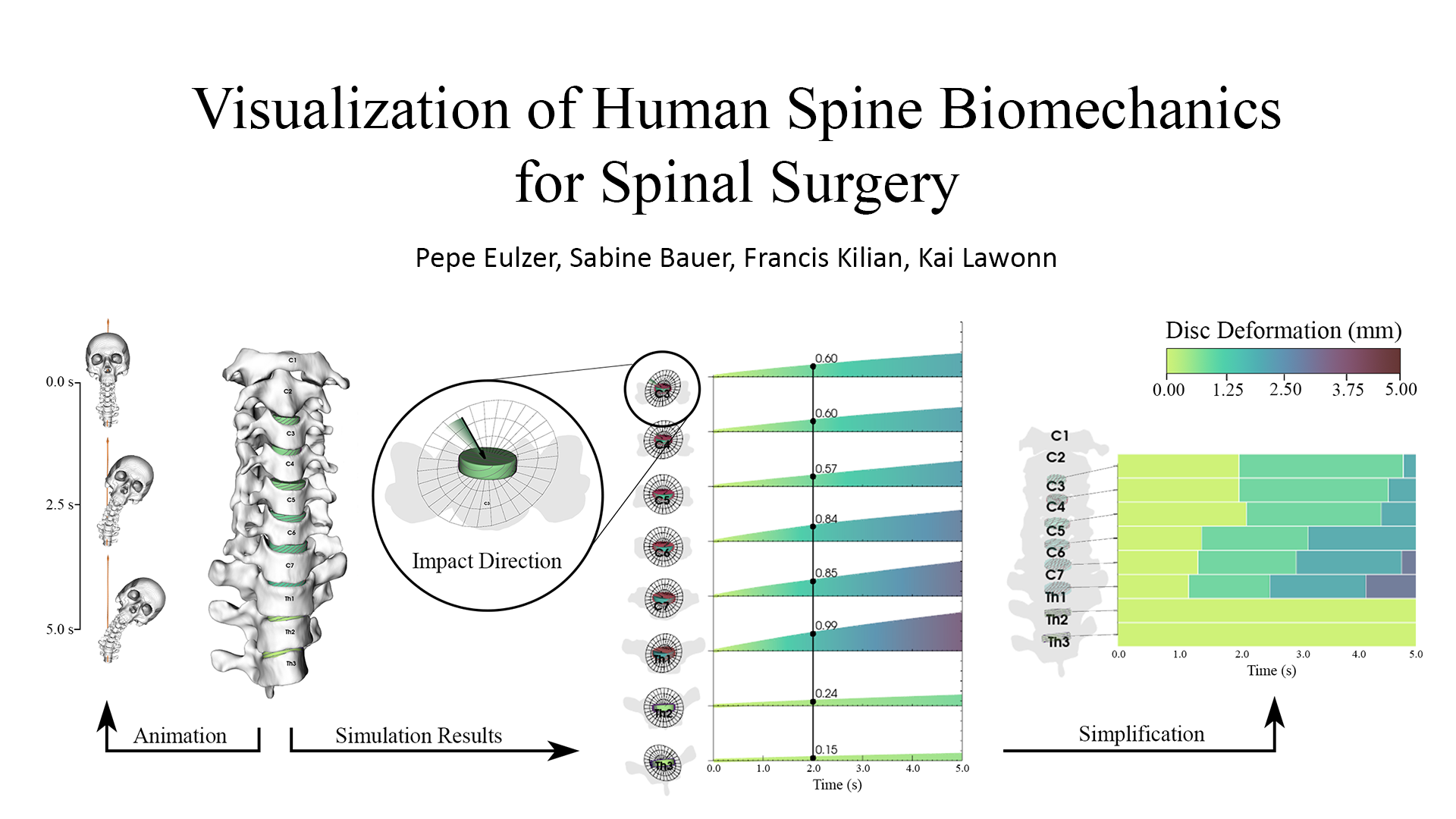Visualization of Human Spine Biomechanics for Spinal Surgery
Pepe Eulzer, Sabine Bauer, Francis Kilian, Kai Lawonn
External link (DOI)
View presentation:2020-10-30T14:30:00ZGMT-0600Change your timezone on the schedule page
2020-10-30T14:30:00Z

Fast forward
Direct link to video on YouTube: https://youtu.be/PvH4suYfU-o
Keywords
Medical visualization, bioinformatics, coordinated views, focus and context, biomechanical simulation.
Abstract
We propose a visualization application, designed for the exploration of human spine simulation data. Our goal is to support research in biomechanical spine simulation and advance efforts to implement simulation-backed analysis in surgical applications. Biomechanical simulation is a state-of-the-art technique for analyzing load distributions of spinal structures. Through the inclusion of patient-specific data, such simulations may facilitate personalized treatment and customized surgical interventions. Difficulties in spine modelling and simulation can be partly attributed to poor result representation, which may also be a hindrance when introducing such techniques into a clinical environment. Comparisons of measurements across multiple similar anatomical structures and the integration of temporal data make commonly available diagrams and charts insufficient for an intuitive and systematic display of results. Therefore, we facilitate methods such as multiple coordinated views, {\color{blue} abstraction} and focus and context to display simulation outcomes in a dedicated tool. By linking the result data with patient-specific anatomy, we make relevant parameters tangible for clinicians. Furthermore, we introduce new concepts to show the directions of impact force vectors, which were not accessible before. We integrated our toolset into a spine segmentation and simulation pipeline and evaluated our methods with both surgeons and biomechanical researchers. When comparing our methods against standard representations that are currently in use, we found increases in accuracy and speed in data exploration tasks. In a qualitative review, domain experts deemed the tool highly useful when dealing with simulation result data, which typically combines time-dependent patient movement and the resulting force distributions on spinal structures.